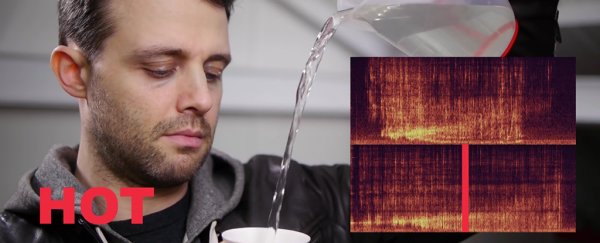You've got a super-cool ability you probably didn't even know you had: how to tell the difference between hot running water from cold running water - through sound alone.
If you don't believe us, check out the video below from Tom Scott's YouTube channel, hosted by Steve Mould, which includes a demonstration of cold water pouring and hot water pouring. It's surprisingly easy to pick between the two.
What's happened is your brain has subconsciously learned to pick up on the differences between the two sounds from all the hot and cold drinks you've heard being poured throughout your life. You may not have thought about the variations, but they're there.
So why are the sounds not the same? It's all to do with the viscosity or the thickness of the liquid.

It's easy to see the difference between the viscosity of warm and cold honey, because the warmer substance is much runnier (it has a lower viscosity). When it comes to water, you can't really see the difference, but you can hear it.
You'll notice Steve doesn't go into much detail about fluid dynamics in the video above, but in short, the molecules in thicker, cold water have less energy, so they're less excited, meaning they move less rapidly, and become stickier in a sense.
There's also less bubbling going on in cold water for the same reasons.
And that, as the Naked Scientists explain, creates lower-frequency sounds.
In contrast, hotter water produces sounds of a higher pitch when it's splashing down into a mug or the bottom of a shower, because the molecules are moving around more than they are in cold water.
The way that temperature changes water – and indeed any liquid – has an impact on everything from global warming to the insides of your freezer, but scientists haven't yet figured out all of the secrets behind these phenomena just yet.
To check out the different sounds, check out the video above, and if you've got a kettle at hand, it's a fun little experiment that anyone can try at home.
